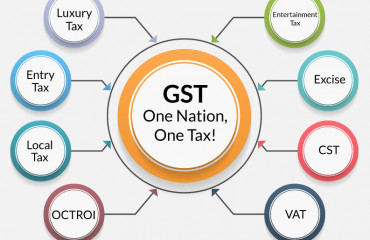
On 1 February, finance minister Nirmala Sithamran presented her sixth budget. Her budget speech was all of 5,244 words and shorter in comparison to the five speeches she gave before this one. Notwithstanding the shorter duration of the speech, the interim budget did have its interesting points. Mint examines a few major ones.
On 1 February, finance minister Nirmala Sithamran presented her sixth budget. Her budget speech was all of 5,244 words and shorter in comparison to the five speeches she gave before this one. Notwithstanding the shorter duration of the speech, the interim budget did have its interesting points. Mint examines a few major ones.
The length of the speech
At 5,244 words, Sitharaman's speech finished in just under one hour. The length of this speech (in words) was around one-fourth the length of those that the finance minister delivered in 2019 and 2020, her first two years of presenting the government's budget. This short speech tells us that the Narendra Modi government is confident of winning the Lok Sabha elections scheduled later this year.
Income tax proposals
In almost every budget, the finance minister of the day likes to offer a few sops to people who pay income tax. But Sitharaman did not tick this parameter in the latest budget. As she said: "I…propose to retain the same tax rates for direct taxes." Personal income tax is one form of a direct tax, with corporate income tax being the other. This implies a stabler income tax regime and that's a good thing.
Gross domestic product
The budget has projected a nominal gross domestic product (GDP) of ₹327.7 trillion for 2024-25, a jump of 10.5% from ₹296.6 trillion in 2023-24, the current financial year. The GDP is a measure of the size of an economy during a particular year. All major budget numbers are also expressed as a percentage of the GDP. The nominal GDP is expected to increase by 8.9% in 2023-24.
The fiscal deficit
The budget at its core is a statement of the government's accounts. In 2023-24, the fiscal deficit is expected to be at ₹17.35 trillion or 5.8% of the GDP. Fiscal deficit is the difference between what a government earns and what it spends. In 2024-25, it's projected to fall to ₹16.85 trillion or 5.1%, in line with the government's aim of reducing the deficit to lower than 4.5% by 2025-26.
The government's debt
The government finances its fiscal deficit primarily by borrowing money and through the money coming into the small savings scheme. The amount of money invested in these schemes at any point, among other things, are the government's liabilities. As of March 2024, the debt and liabilities are expected to be at ₹168.72 trillion or 56.9% of the GDP. By March 2025, this is expected to be at ₹183.67 trillion or 56%. What does this mean? The government's gross borrowing in 2024-25 is expected to be at ₹14.13 trillion, lower than ₹15.43 trillion it is expected to borrow in 2023-24. Further, money coming in through small savings schemes, after redemptions due to investors in 2024-25, is expected to be at ₹4.66 trillion against ₹4.71 trillion in 2023-24. This means lower government borrowings in 2024-25, easing the money available for borrowing by the private sector.
The direct taxes
2024-25 will only be the third time since 1991-92, when personal income tax collections are expected to be larger than corporate income tax. 2020-21 and 2023-24 are the only other years this has happened. The personal income taxes are expected to be at ₹11.56 trillion, or 3.5% of the GDP, against corporate taxes of ₹10.43 trillion or 3.2%. The corporates continue to benefit from the cut in the rate which happened in 2019.
Goods and services tax
In 2024-25, the government expects to collect a total goods and services tax (GST) of ₹10.68 trillion or 3.3% of the GDP. This includes central GST, integrated GST, and GST compensation cess. This is a slight jump from 3.2% in 2023-24. As the finance minister said in her speech "the average monthly gross GST collection has almost doubled to ₹1.66 trillion, this year". The monthly GST collections includes the share of state governments as well.
Capital expenditure
In the last four years, there has been a tripling of the asset creating capital expenditure. In 2024-25, the central government expects to spend ₹11.11 trillion, or 3.4% of the GDP, as capital expenditure, a jump of around 17% from an expected capital expenditure of ₹9.5 trillion in 2023-24. The capital expenditure to be incurred in 2023-24 is expected to be more than 28% higher than in 2022-23.
Tax demands
The finance minister talked about 'a large number of petty, non-verified, non-reconciled or disputed direct tax demands,' some dating as far back as 1962. In her speech, she proposed to 'withdraw such outstanding direct tax demands up to ₹25,000 pertaining to the period up to financial year 2009-10 and up to ₹10,000 for financial years 2010-11 to 2014-15'. Anything that makes life easier for income taxpayers is always a welcome move.
Other major plans
The finance minister announced plans to help the middle class citizens to buy or build their own houses, to build more homes under the PM Awas Yojana and to extend the healthcare cover under Ayushman Bharat scheme to all Asha workers and Anganwadi workers. Further, rooftop solarization, where the plan is to enable one crore households to obtain up to 300 units free electricity every month, was announced.
The missing point
Private consumption expenditure, which forms a little under 60% of the Indian economy, is expected to grow by 4.4% in 2023-24. In fact, other than the pandemic year of 2020-21, when private consumption contracted 5.2%, this is the slowest growth since 2002-03. This tells us that a significant chunk of India's population is still suffering from the negative after-effects of the covid pandemic. Some steps to push up consumption growth would have been great.
